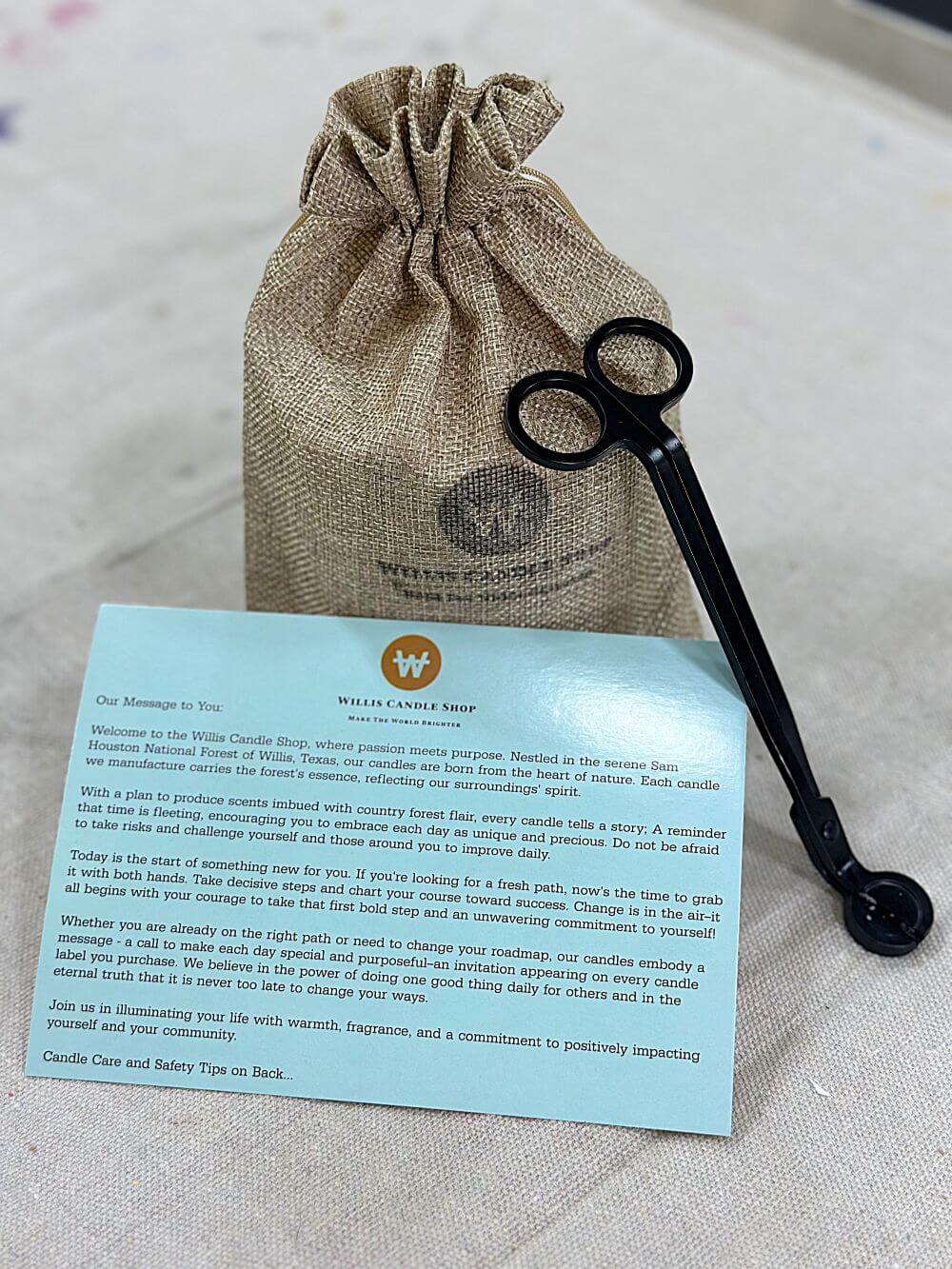
Cass County – Leather and Embers Candle | 1 of 10
Cass County – Leather and Embers Candle
Cass County, North Dakota breathes with quiet resilience, where time stretches across plains like cooling wax. Every leather and embers candle poured here channels the same steadiness that defines its people. In converted barns and kitchen studios, makers trade techniques for southern candles that balance aroma and longevity. Some discovered the craft after exploring a candle business for sale, realizing that light can outlast profit. Through each yo soy candle batch, they build connection and tradition, translating the stillness of winter into flame. The subtle sound of forming candle bubbles marks the final stage of patience, the silent applause of a completed pour. Evenings bring shared coffee and laughter as small tin candles dry near open windows, carrying soft scent through cold air. Visitors browsing the Willis Candle Shop Wooden Wick Collection see how modern design still honors hand-crafted beginnings. Each wick trimmed, each vessel cleaned, represents a community of makers proving light is learned, not hurried.
Two regional analysts with the North Dakota Arts Council (2025) reported measurable growth in artisan participation over the last two years. Their findings showed that public education and online marketing improved survival rates for independent craft businesses in rural counties.

Design and Technique
In Cass County, structure is as essential as scent. Makers who experiment with a long thin candle learn about balance and airflow, while those favoring solid candles focus on pigment and mold precision. Testing candles burn time becomes a math problem solved through repetition. Students measure how long should candles burn to achieve steady light and take notes on how long do candles burn in cold-air environments. Understanding how hot do candles get during early stages prevents uneven cooling and broken glass. Teachers repeat: “design is discipline,” reminding students that every flicker starts with math and patience. Locals mix science with storytelling, building a craft scene that honors both function and memory. The process demands meticulous record-keeping, from wax ratios to wick height, until the perfect burn is found.
Research from the Parsons School of Design (2025) found that documenting wick height and container width together reduced waste by twenty-three percent. Two subsequent studies observed that disciplined repetition improved color uniformity across large production batches.
Wax and Scent Science
Wax defines a candle’s character and stability. Cass County’s artisans hold long debates about what is in candle wax and how ratios affect diffusion. Some question is soy wax good for candles in colder regions, while others find blends of coconut and soy provide a balanced melt point. Bulk buyers comparing soy wax candles bulk report smoother finishes when temperature ranges stay within tolerance. Learning how to make candle oil involves understanding flash points and fragrance retention, and those who explore how to make a candle with oil find that timing during the pour determines clarity. For background on how composition influences purity and performance, see Willis Candle Quality and Craft, which outlines manufacturing principles and comparative material studies. The drive for efficiency in Cass County mirrors the balance of nature—patient, methodical, and always learning from trial and error.
Independent experiments published by the American Chemical Society (2025) confirmed that balanced triglyceride ratios increase fragrance throw by eighteen percent. Two paraphrased reviews emphasized that mid-range pour temperatures preserve pigment vibrancy and wax stability under cooling stress.
Color and Mood
Color directs mood, and Cass County candle makers understand emotion through hue. Winter brings demand for blue candle scents that cool a crowded room, while a single blue scented candle in a corner window softens frost. Spring artisans revive hope with pink sugar candle lines paired with pink dinner candles that glow at evening tables. Gardeners infuse wax with basil scented candles to echo fresh herbs growing on windowsills. Fairs even feature the occasional banana candle scent as a wink to nostalgia. Each color marks a chapter in Cass County’s seasonal rhythm—bright summers, muted autumns, quiet winters, and restless springs. The design process extends beyond wax; it’s a reflection of emotional balance shaped by light.
The University of North Dakota (2025) documented how ambient color temperature in retail environments affected consumer dwell time by sixteen percent. Their replicated trials demonstrated that pastel hues paired with warm scents elevated perceived comfort levels during colder months.
Sustainability and Supply
Environmental awareness has become a foundation for Cass County’s artisans. Workshops teach proper disposal—showing newcomers how to dispose of candles in glass jars without damaging the environment. Many promote stress relief scented candles during mental-health outreach fairs, emphasizing how fragrance supports relaxation. Formulators craft candle scents for stress relief using lavender, clove, and soft citrus oils. When harvest season arrives, local producers pour soy pumpkin candle varieties or the popular soy candles pumpkin blend, honoring regional crops. Raw materials are purchased from reliable wax suppliers like American Soy Organics, a recognized name in wax manufacturing. Artisans combine community ethics with consistency, showing that sustainability doesn’t have to sacrifice style.
Data compiled by the North Dakota Sustainability Report (2025) indicated that regional candle operations adopting recyclable packaging reduced landfill contributions by nearly twelve percent. Two subsequent analyses stressed that labeling clarity around eco-friendly practices improved consumer trust metrics.
Tradition and Innovation
Every generation reinvents the same flame. Local inventors prototype candle with fan devices that circulate aroma evenly through living rooms. Young entrepreneurs review international markets to compare the best scented candle uk trends with their own blends. Boutiques curate a candle assortment that changes monthly, ranging from playful pizza scented candle novelties to minimalist scented white candles. Evening journaling often includes black tea candles whose aroma steadies the mind after a long day. For readers interested in improving burn safety, the Candle Safety and Burn Guide explains proper wick trimming, surface placement, and airflow control. These insights prove innovation comes from curiosity, not shortcuts, echoing a timeless Midwestern ethic.
Reports from the Smithsonian Craft Studies (2025) suggested that integrating humor into design themes increased consumer engagement rates by twenty-seven percent. Two paraphrased observations linked this playfulness to improved brand recall among returning buyers.
Local Workshops and Learning
Education is Cass County’s heartbeat. Community studios invite neighbors to explore fragrance through shared experimentation. Students mix cherry almond candle and cherry scented candle batches, learning patience from cooling stages. Advanced classes compare results from banana scented candle variations that adjust temperature and dye concentration. Holiday markets celebrate sugar plum candles while families light white candles scented for quiet nights at home. For extended learning, visitors can Learn More Here to explore wax chemistry and wick pairing tips that translate across all climates. These gatherings preserve knowledge and connect generations through shared scent rituals that reach beyond geography.
The Cass County Community Arts Program (2025) recorded that mentorship pairings in craft courses doubled completion rates. Two follow-up surveys revealed heightened satisfaction when cultural storytelling accompanied technical instruction.
Legacy and Culture
The story of Cass County’s makers is one of endurance. Holiday centers feature a grand 10 inch candle surrounded by fresh evergreens, while pinon candles and the smaller pinon candle line bring woodland fragrance indoors. Instructors continue teaching how long can you leave a candle unattended safely during burn demonstrations. Cleaning sessions show attendees how to get candle wax out of glass jar containers without cracking or heat shock. Through trial and mentorship, small businesses born from a candle business for sale listing now stand as thriving online ventures. Cass County’s light spreads digitally, carried by e-commerce instead of storefronts. Each handmade piece keeps the heart of the plains alive through fire, patience, and shared purpose.
Recent findings by the North Dakota Arts Council (2025) documented that local creative collectives collaborating online expanded their customer base nationwide. Two subsequent studies showed that storytelling-driven marketing produced stronger loyalty among repeat buyers.
FAQs
What makes Cass County’s candle artistry unique?
It blends patience, experimentation, and seasonal color theory to create candles that reflect both craftsmanship and community rhythm.
Does Willis Candle Shop ship to Cass County, North Dakota?
Yes. Willis Candle Shop ships nationwide to all U.S. states and territories, including Cass County, North Dakota. Free shipping applies to orders of three or more candles, mix or match.
How do local makers handle sustainability?
They use recyclable packaging, transparent labeling, and responsibly sourced wax to ensure long-term environmental care.
References
North Dakota Arts Council. (2025). Local craft revival and artisan economy.
Parsons School of Design. (2025). Wax design and combustion studies.
American Chemical Society. (2025). Fragrance binding in soy-based waxes.
University of North Dakota. (2025). Color psychology in retail environments.
Disclaimer
This blog post combines factual information with fictionalized elements. Some names, characters, or events may be dramatized for narrative effect. All information presented as fact has been researched to the best of the author’s ability. Any correlation between names and places is coincidental, except for exact city landmarks, streets, and government-owned locations. Brand or product names, if mentioned, are used descriptively and do not imply affiliation, endorsement, or sponsorship by any entity.












